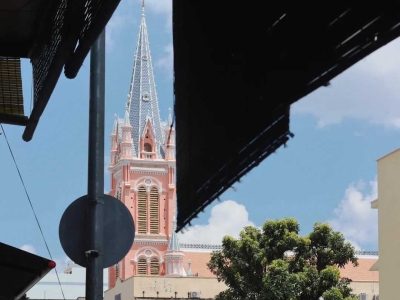Hanoi was the capital city of Vietnam during the Vietnam War from 1945 to 1975. The war had a significant impact on Hanoi and its residents, as it led to significant political, social, and economic changes within the city.
During the war, Hanoi became a symbol of resistance against the United States and its allies, who had occupied the country since 1950. The Vietnamese government sought to hold onto control of the city and maintain strategic importance as part of the larger anti-war movement and the larger geopolitical struggle between the communist North and the West.
The war caused widespread destruction in Hanoi, with buildings and infrastructure being destroyed or severely damaged. It also resulted in the displacement of millions of people, including civilians, military personnel, and refugees. The fighting in the city saw fierce fighting between various factions, including Ho Chi Minh's Viet Cong, the US military, and local ethnic groups such as the Han and Cham.
The war also had a profound impact on the cultural life of Hanoi, with many traditional customs and practices being lost or suppressed. This included the suppression of the French colonial legacy and the introduction of communist ideology and policies that emphasized collectivism and centralization.
Despite these challenges, Hanoi managed to survive and adapt to the harsh realities of the war. It continued to function as the administrative center of the North during periods of conflict and repression, while also evolving into a modern metropolis with a diverse population and thriving economy.
In conclusion, Hanoi was a complex and multifaceted city during the Vietnam War, characterized by political, social, and economic changes, devastating damage, and the struggle for control and survival. While it faced numerous challenges, Hanoi ultimately emerged from the war stronger and more resilient than ever before. |
 SunWorld HL, the world's largest double-decker cable car, is located in Halong Bay, Hanoi
542 Read
SunWorld HL, the world's largest double-decker cable car, is located in Halong Bay, Hanoi
542 Read
 B á nh M ì Huynh Hoa, 5KU Station, and PH Ở TH Ậ N QU Ậ N 1. Restaurants all delicious
691 Read
B á nh M ì Huynh Hoa, 5KU Station, and PH Ở TH Ậ N QU Ậ N 1. Restaurants all delicious
691 Read
 Ho Chi Minh, the Paris of the East, is full of coffee culture, low prices, and beautiful architecture
478 Read
Ho Chi Minh, the Paris of the East, is full of coffee culture, low prices, and beautiful architecture
478 Read
 Thang Long Imperial Citadel in Vietnam, built in the 7th century AD, is the prototype of Hanoi
581 Read
Thang Long Imperial Citadel in Vietnam, built in the 7th century AD, is the prototype of Hanoi
581 Read
 Android APP
Android APP IOS APP
IOS APP